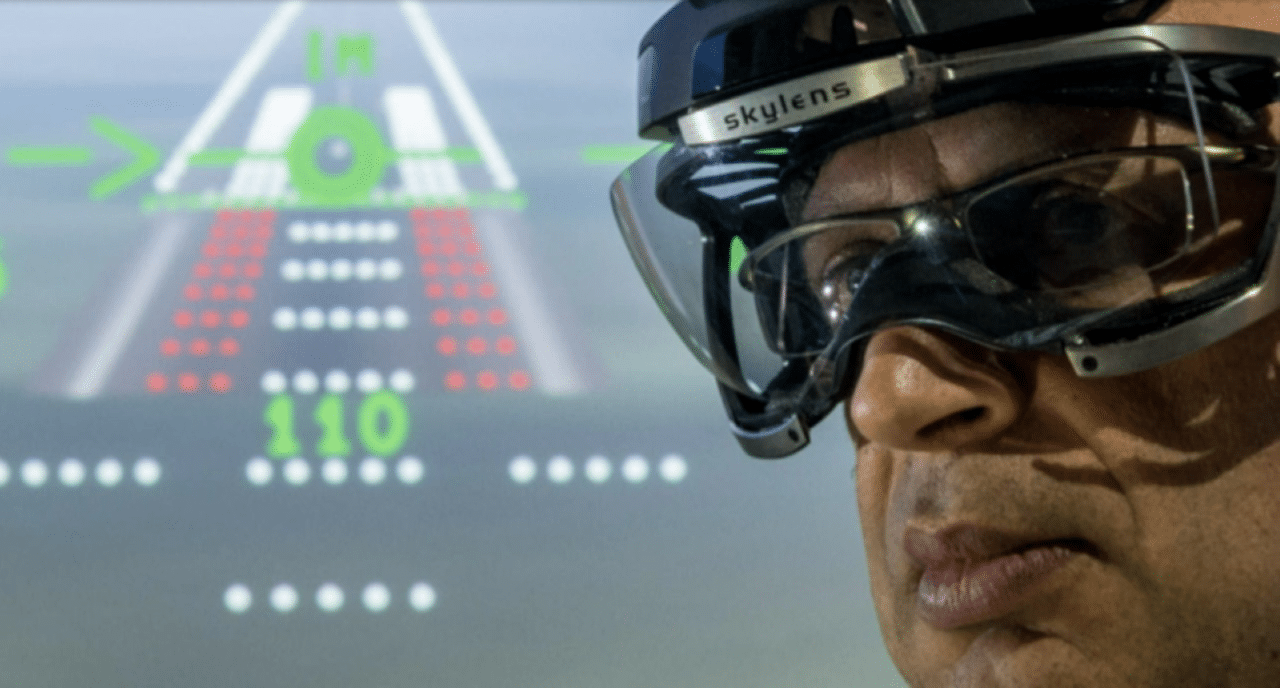[Avionics Today 07-17-2015] Elbit Systems’ new Skylens wearable Head-Up Display (HUD) is well on its way to making its debut aboard ATR-600 series aircraft in a move that has the potential to open up new possibilities within the Enhanced Flight Vision Systems (EFVS) market. With Elbit Systems recently achieving Proof of Concept (POC) certification, Avionics Magazine caught up with Elbit Systems’ Vice President of Commercial Aviation, Dror Yahav, to see how the new wearable device can help new genres of pilots increase their situational awareness and reduce in-flight workload.
 |
| Pilot wearing Skylens wearable HUD. Photo: Elbit Systems |
“The Skylens is a wearable head-up display implementation for those platforms who can not accommodate head-up displays or who cannot afford head-up displays,” said Yahav. “By enabling HUDs on a wearable device, we open up the head-up display market for many more customers who couldn’t have this capability before, and ATR is typical of that demographic.”
ATR manufactures regional turboprop aircraft, for which pilots frequently fly routes to remote airports that are not highly equipped with the next generation landing infrastructure of larger airports. Landing at such airports is often limited or dangerous when low visibility conditions, such as fog, rain or dust are present. Night flight can be an issue as well at under-equipped airports. An EFVS, or a system of sensors and cameras that present a real-time picture of what’s ahead to allow the pilot to both fly and land the aircraft more safely in low visibility, could help in many of these situations, but previously haven’t always been an option.
“For a traditional head-up display, the ATR’s aircraft’s cockpit is too small,” said Yahav. But the Skylens wearable HUD, which fits like a pair of ski goggles onto the pilot’s head to display Elbit’s Clear Vision EFVS information on a pilot’s visor, is compact enough to fit in the cockpit. Also, it not only enables traditional HUD functionality but also, as the system is not fixed to a structure in the cockpit, the system can present information to the pilot from his or her own point of view. This means HUD and EFVS functionality, which has traditionally been limited to a view through the front window, can also service side views.
“We’re talking about brand new functionality that we can’t provide with traditional head-up display design,” said Yahav. “The pilot can now obtain information and do much more than he could, such as flying in high cross winds and providing synthetic vision wherever he looks, not just straight ahead. Those kinds of things are quite unique to a wearable system.”
This information is also expanding as air traffic modernization efforts, such as NextGen in the U.S. and Single European Sky ATM Research (SESAR) in Europe, implement new airspace surveillance and communication technologies such as Automatic Dependent Surveillance-Broadcast (ADS-B) and Controller Pilot Data Link Communications (CPDLC), which have the potential to be displayed on the device, Yahav said.
Wearable tech itself is taking off in aviation and Yahav notes that EFVS in the military market are moving almost exclusively to the wearable arena, beginning with the F-35 Joint Strike Fighter (JSF), which features virtually no traditional head-up displays.
“I believe the same thing will happen with commercial aviation,” said Yahav, speaking about the move to wearable tech. “For example, we can now bring head-up display capabilities to helicopters, which didn’t have any such capabilities before. We are also talking about head-up display capabilities for air transport, which previously couldn’t afford it. And also — and this is very significant — we are talking about airlines, which could retrofit or install this capability into their fleets.”
Cost savings are a huge reason why the tech could see a boost in the air transport market when the Skylens is certified and enters the market in 2017. To install an HUD for airlines across an entire fleet is a difficult undertaking, requiring hours of maintenance work and costly installation. “With wearable HUDs we’re talking about entering a brand new market that couldn’t afford HUD technology and now has full availability to it,” said Yahav. “This could be a revolution.”